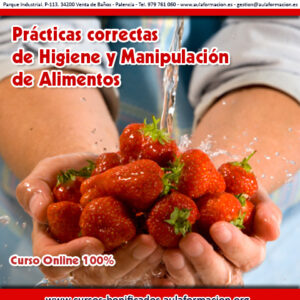Descripción
Upper-intermediate English course
Resultados de aprendizaje General Goals
ENGLISH AN UPPER – Intermediate Course General Goals: The students should be able to use USED TO in its different forms to talk about past facts or habits. They would also use the PERFECT FORMS of Modal Verbs to speak about past situations. The students should be able to talk about their general or specific preferences using PREFER and WOULD RATHER. The students should manage THE PASSIVE VOICE and THE REPORTED SPEECH .They will also be able to express agreements and disagreements by using SO… and NEITHER. The students should manage the different types of CONJUNCTIONS as a way of putting ideas together. Finally the students should be able to use the particular CAUSATIVE CASE of the English language with HAVE, GET and MAKE. The students will have the possibility of exercising their listening comprehension by means of several recordings and videos showing different situations of life.
DURACION
35 Horas
DESTINATARIOS:
Estudiantes iniciados en el proceso de aprendizaje del idioma inglés.
Metodología
El Upper-intermediate English course se imparte en la modalidad a distancia bajo metodología de aprendizaje E-Learning. La acción tutorial se desarrollará completamente a través del Campus Virtual de la Plataforma.
El Modelo de formación a distancia está basado en una combinación de una acción tutorial constante y autoaprendizaje mediante recursos didácticos multimedia e interactivos.
Según lo anterior, la formación a distancia se basa en un modelo de formación que no requiere la presencia física del alumno en una clase o centro de formación tradicional. Esto le permite compatibilizar el aprendizaje con otras actividades.
Además, el alumno es quien establece sus horarios, el ritmo y el lugar de realización del curso, aunque dentro del Plan de Trabajo establecido.
El autoaprendizaje es necesario a través del estudio y el trabajo individual.
Más información sobre el sistema de bonificación
Formación bonificada
https://cursos-bonificados.aulaformacion.org/formacion-bonificada/
Fundación Estatal para la Formación en el Empleo (FUNDAE) y el sistema de bonificación
https://www.fundae.es/empresas/home/como-bonificarte
PROGRAMA
1. USED TO , BE + USED TO, GET+ USED
The use of USEDTO + INFINITIVE. The use of BE + USEDTO + GERUND The use of GET + USEDTO + GERUND Video Exercise : Fill in the blanks : Talk About your Job
2. PERFECT MODALS
The use of CAN/COULD + HAVE+ PAST PARTICIPLE.. The use of MAY/MIGHT + HAVE+ PAST PARTICIPLE The use of SHOULD + HAVE+ PAST PARTICIPLE The use of MUST + HAVE+ PAST PARTICIPLE Video Exercise : Fill in the blanks : He is not available
3. EXPRESSING SPECIFIC OR GENERAL PREFERENCES
The use of WOULD RATHER + (bare verb) for specific or general preferences The use of WOULD PREFER + (by to + infinitive or a noun.,) The use of PREFER + (by to + infinitive or a noun.,). Listening Exercise: An Interview with Jenny Longton Listening
4. PASSIVE VOICE IN AL TENSES
The PASSIVE VOICE in all tenses The VERB TO BE + PAST PARTICIPLE in the passive voice. Video Exercise : Fill in the blanks : A visitor in the office
5. REPORTED SPEECH IN
The Reported Speech in affirmative and Negative sentences. Necessary changes in tenses and pronouns. Video Exercise : Fill in the blanks : Roman Bath
6. REPORTED SPEECH IN COMMANDS AND QUESTIONS
The Reported Speech in affirmative and Commands and questions Necessary changes in tenses and pronouns. Listening Exercise: Lost At Sea
7. AGREEMENTS AND DISAGREEMENTS
The use of So… and Neither So… to. Either Neither Listening Exercise: Aggressive Driving
8. COORDINATING CONJUCTIONS
FANBOYS the coordinating conjunctions in English and their use Listening Exercise: My local Newspaper
9. CORRELATIVE CONJUCTIONS
The Use of the conjunctions which work in pairs Listening Exercise: Pollution
10. THE CAUSATIVES FORMS
The use of HAVE, MAKE and GET as well as other forms to express the causative form.: Video Exercise: Fill in the blanks : Would like to leave a message participle.
11. THE INDRECT OBJECTS
Two forms of expressing the sentences using INDERECT OBJECTS DITRANSITIVE verbs Listening Exercise: Be Careful Online
12. DOUBLE OBJECTS IN A SENTENCE
To differentiate DIRECT OBJECTS FROM INDIRECT OBJECTS.. The use of complex objects with verbs that use I SUBJECT + VERB +OBJECT+ INFINITIVE Listening Exercise: An Old Country Hours






